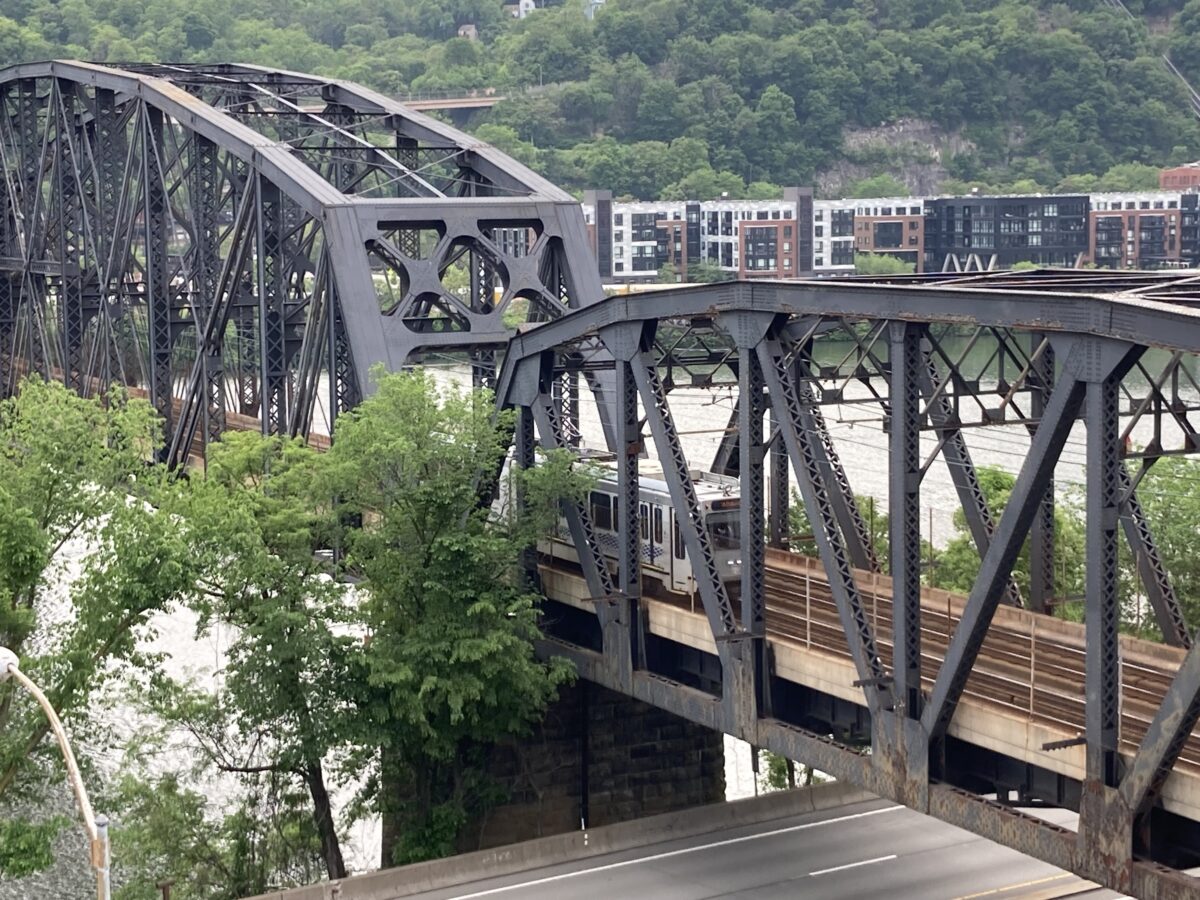After years of lobbying for funding, Pittsburgh Regional Transit is ready to move forward with one of its most crucial projects: upgrading the 120-year-old Panhandle Bridge, which provides the only access to Downtown Pittsburgh for the light rail system.
The former railroad bridge, which crosses the Monongahela River from Station Square, is in serious need of improvements to its substructure and masonry, tracks, lights and electrical work, as well as a paint job to preserve its steel. The agency has started design work and could be ready to go out for bids early next year for two years of work expected to cost more than $65 million.
CEO Katharine Eagan Kelleman has been pushing for several years to get state and federal funding for the project, and the agency now has about half the needed money and expects to get the rest before construction begins. Controller Pete Schenk said the agency is “definitely making a down payment” on the project in the $195.2 million capital budget up for preliminary approval Friday by the board of directors.
As spokesman Adam Brandolph put it, the agency has been setting aside money in “a big piggy bank” that includes more than $12 million from the state Department of Transportation.
“We will get there,” Kelleman said. “There’s also [federal stimulus money] available. I’m a lot more confident than I was a year or two ago.”
The agency has been concerned because the bridge has been rated in fair condition since 2004, one step above poor. If it worsened and had to be replaced, the cost likely would soar above $100 million.
“The bridge itself really hasn’t been touched since the 1980s,” said Greg O’Hare, PRT’s assistant director of capital projects and a bridge engineer. “It needs a lot of work.”
The project is particularly tricky, O’Hare said, because the bridge passes over two sets of railroad tracks, city streets, the Parkway East and Monongahela River.
“There’s a significant amount of coordination involved,” he said. “It’s a complicated one. It’s a good one, though. It’s a challenge for engineers.”
The design, which should be finished early next year, is concentrating on finding ways to minimize disruptions to rail traffic, O’Hare said. A lot of the work on the span, just 10 feet short of three-fourths of a mile long, can be done using one lane of traffic alternating inbound and outbound as needed.
The exception is steel work above the deck, which will require the bridge to be closed. If that work can’t be done overnight when no light rail trains are running, then the agency would have to stop them at Station Square and run shuttle buses into Downtown, as it has done for other projects or emergencies.
Once construction begins, the work should last about two years.
“We anticipate we wouldn’t have to touch it again for at least 30 years,” O’Hare said.
Ed covers transportation at the Pittsburgh Post-Gazette, but he's currently on strike. Email him at eblazina@unionprogress.com.



